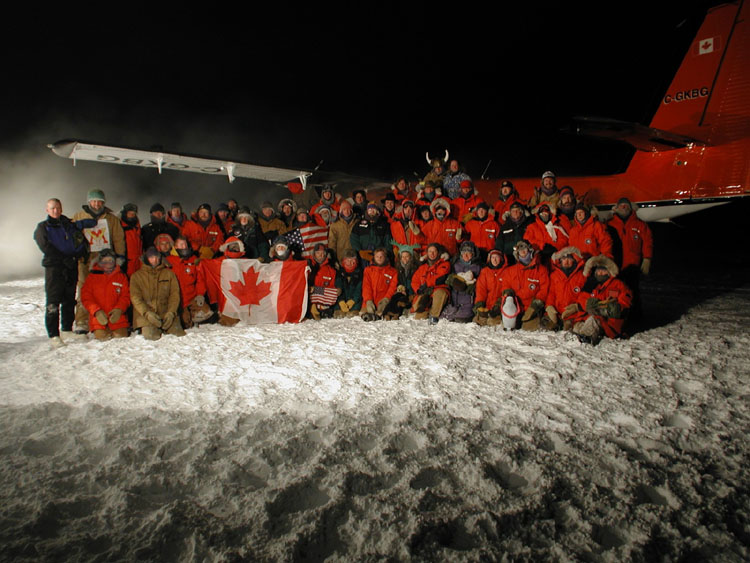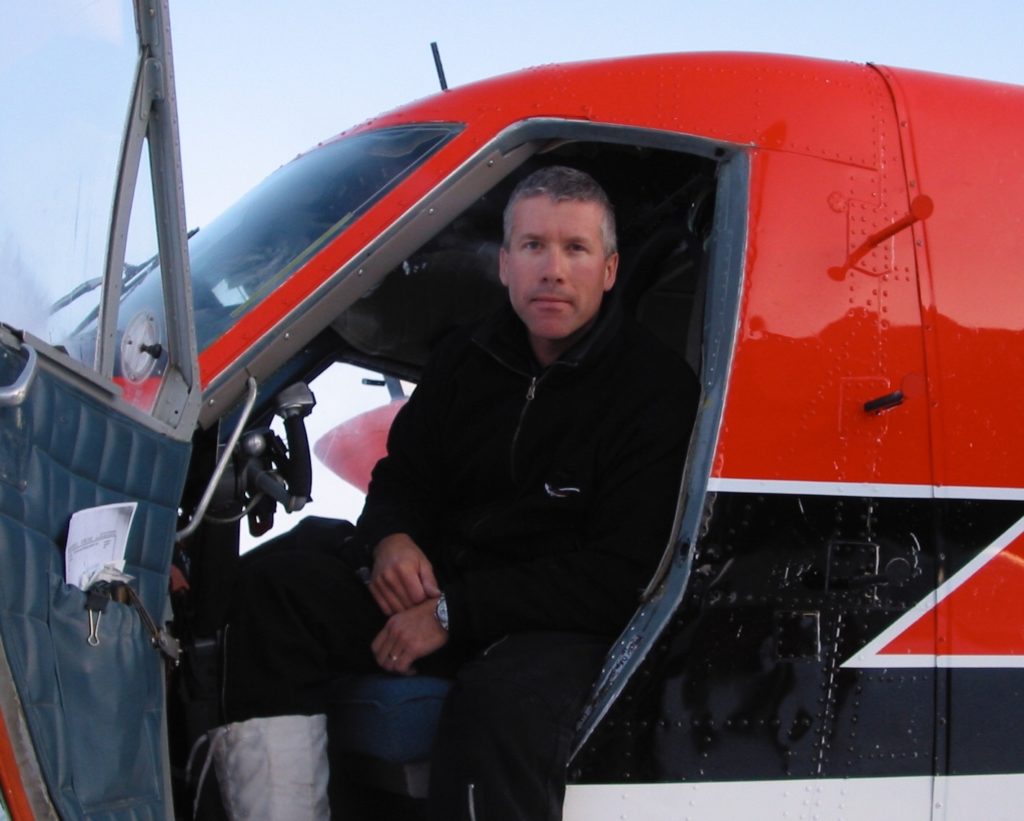Estimated reading time 6 minutes, 1 seconds.
When asked about passing the point of safe return on his first Antarctic rescue flight in 2001, Sean Loutitt didn’t skip a beat.

“You know you’re not turning around,” he said with a broad smile. When pressed a little as to whether it might have been just a bit more complicated than that, Loutitt smiled again and said: “Yeah, well, you definitely forget about what’s behind you.”
In a recent interview with Loutitt, leader of two Antarctic winter rescue flights in 2001 and 2003, respectively, he made it sound like it was all in a day’s work.
His sangfroid about that particular moment, vividly recollected a decade-and-a-half later, didn’t betray the gravity of having only enough fuel to go forward to South Pole Station. If that wasn’t going to happen, for weather or any other reason, there were only a slim set of fairly grim alternatives.

When the Kenn Borek Twin Otters flew past that point they knew one thing for sure: they were landing somewhere in Antarctica in winter with its endless pitch black and temperatures in the range of -60C to -70C.
This is not to say that there was anything cavalier about the flight or that Loutitt felt it was in any way daring. Far from it. The flight was meticulously planned in extraordinary detail. He described it as a “baby step” from the flights Borek had been routinely making, albeit in the Antarctic summer with its attendant 24 hour sunlight and comparatively warm temperatures.
Loutitt had been enjoying a vacation with his family when the call initially came about the flight to the South Pole. Given the gravity of the situation — the base doctor was gravely ill — Loutitt returned to Calgary immediately to plan the flight.
That call came on a Thursday and they departed from Calgary on the following Monday. Two identical Twin Otters and crews flew to Rothera Research Station off the coast of Antarctica. There, they would wait for the weather window the South Pole flight would require.
The most anxious moment of the flight was likely when they fired up the Twin Otter for the return and discovered it was firmly frozen to the ski-way. Through a combination of applying full power and eventually employing South Pole staff to rock the Twin Otter side-to-side, they successfully broke it loose.
They were soon on their way home. When asked what they would have done otherwise, Loutitt mustered his best Gene Kranz “failure-is-not-an-option” demeanour and simply said: “There is always a way.” He was anchored with quiet determination, coupled with a vast experience of similar, difficult situations.
So how does one prepare for a trip to the Antarctic in winter? What do you have to have on your resumé?
In Loutitt’s case it came, at least in part, from being born and growing up in the Canadian far north. His father was an aircraft maintenance engineer and bush pilot. There is a picture of Loutitt perched on his very understanding mother’s lap, at the controls, when he was just one year old. Being a float plane dock attendant in Yellowknife at the age of 12, and being paid $2.52 an hour (we did mention meticulous, right?), was also part of it. All of these things helped in a very direct and meaningful way to create and shape Loutitt’s passion for flight. Preferably at high latitudes in challenging conditions.
His parents insisted on a good formal education and Loutitt obtained an engineering degree from the University of British Columbia (UBC). “Cars and girls” grabbed his attention and for a brief time there was not a clear way forward to the pilot’s seat for Loutitt.
It was only after his third year at UBC, while working a summer job up in Fort MacMurray, Alta., when the flying bug bit again. He cut back on his classes and took flight training. While he did instruct for a short period, it was only a matter of time before he was working for Buffalo Airways in Yellowknife, N.W.T., and then eventually on to Borek, where he spent 14 years.
For a time after Borek, Loutitt took a desk job which utilized his business acumen more than his flying skills. While he was successful at it, he soon realized it didn’t suit him for the long term. He rejigged his career path and joined Canadian North, where he is currently chief pilot for the airline’s Bombardier Dash 8 fleet.
It’s a position which guarantees a sufficiently satisfying amount of time in the captains’ seats of the Canadian North Dash 8s and Boeing 737s, which is just the way he likes it.
Check out the in-depth interview with Sean Loutitt on The WorkNotWork Show.








